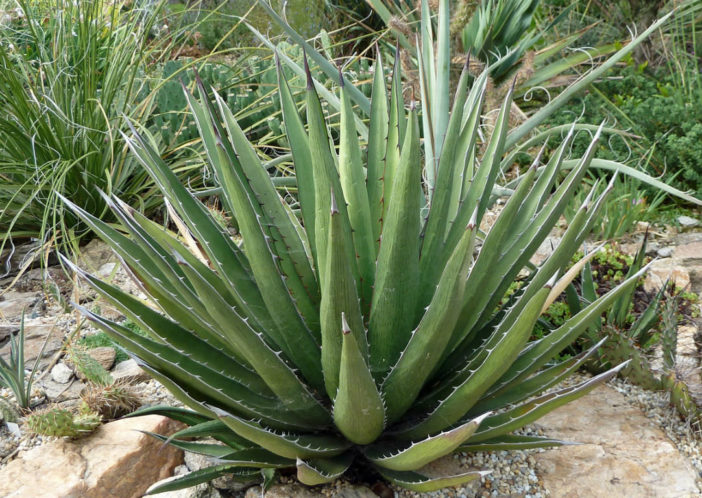Scientific Name
Agave lechuguilla Torr.
Common Name(s)
Lechuguilla, Shin Dagger, Tampico Fiber
Synonym(s)
Agave poselgeri, Agave multilineata, Agave lophantha var. tamaulipasana, Agave lophantha var. subcanescens, Agave lophantha var. poselgeri
Scientific Classification
Family: Asparagaceae
Subfamily: Agavoideae
Genus: Agave
Description
Agave lechuguilla is a succulent plant that forms stemless, frequently suckering rosettes of stiff, lance-shaped, ascending to erect leaves with margins armed with sharp teeth and a long grayish terminal spine. The rosettes grow up to 16 inches (40 cm) tall and 24 inches (60 cm) in diameter. Leaves are light green to yellowish-green. They are up to 20 inches (50 cm) long and 2 inches (5 cm) wide.
After 10 to 15 years, the rosette produces an up to 12 feet (3.6 m) tall, densely flowered stalk with yellow flowers, frequently tinged with red or purple, and up to 1.8 inches (4.5 cm) long. The seed capsules are oblong and up to 1.2 inches (3 cm) long.

Hardiness
USDA hardiness zones 7a to 10b: from 0 °F (−17.8 °C) to 35 °F (+1.7 °C).
How to Grow and Care
Once established, most Agaves are easy to grow and take little care.
These plants require full sun to part shade. If you are growing Agaves indoors, choose a bright, sunny window with as much sun as possible. Plants that are grown in low-light conditions become etiolated. Agave plants love going outside from spring to fall.
Agaves tolerate most soils as long as they have good drainage but prefer sandy or rocky soil.
Mature plants are very drought-tolerant. From spring to fall, water thoroughly your Agave when the soil mix becomes dry. In winter, water sparingly about once a month. Overwatering may encourage fungal root rot. When you first establish an Agave plant outdoors, water it once or twice a week. Plants in containers require more frequent watering than those in the ground.
When the pot becomes full of roots, it becomes pot-bound. If you notice your Agave becoming pot-bound, repot it with new soil in a new pot that is slightly larger than the old one.
Learn more at How to Grow and Care for Agave.
Origin
Agave lechuguilla is native to western Texas, southern New Mexico, and south into Mexico.
Links
- Back to genus Agave
- Succupedia: Browse succulents by Scientific Name, Common Name, Genus, Family, USDA Hardiness Zone, Origin, or cacti by Genus
Photo Gallery
Click on a photo to see a larger version.



